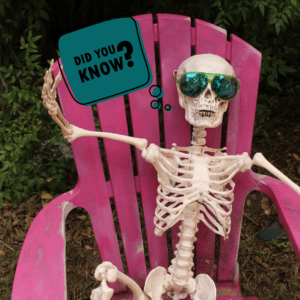When you hear “Dowager’s Hump,” it might evoke an image of an elderly person hunched over, struggling with chronic pain. 👵 However, this condition, medically known as kyphosis, can affect people of all ages and is not just a cosmetic concern.
Dowager’s Hump is a curvature of the upper back that creates a pronounced forward rounding. This posture can lead to various issues, including pain, stiffness, and even breathing difficulties. Fortunately, there are ways to manage and alleviate the symptoms through manual therapy and targeted exercises. 🙌 🎯
Understanding Dowager’s Hump
Dowager’s Hump occurs when there is an excessive curve in the thoracic spine (the middle and upper part of the back). This condition can result from several factors, including osteoporosis, degenerative disc disease, poor posture, and muscle imbalances. It’s not uncommon to see this condition develop due to prolonged periods of sitting, especially with poor posture, which many of us are guilty of in our desk bound lifestyles. 😲
The Impact on Daily Life
Living with Dowager’s Hump can sometimes be challenging. The physical symptoms go beyond the obvious change in posture. Individuals may experience chronic neck and back pain, muscle fatigue, and stiffness. 😢 These symptoms can significantly impact one’s quality of life, making everyday activities, such as driving or even sitting comfortably, quite difficult. Moreover, the hump can affect self-esteem and body image, leading to psychological distress.
The Role of Manual Therapy
Manual therapy, often provided by chiropractors, plays a crucial role in managing Dowager’s Hump. This hands on 👐approach focuses on creating healthy movement of the spine and surrounding muscles to improve alignment, mobility, and function. 🙌
▪️ Spinal Adjustments:
Chiropractic adjustments can help to improve healthy joint motion, reducing excessive curvature. By gently manipulating the spine, Chiropractors aim to restore proper alignment and improve the overall posture. This can alleviate pain and reduce muscle tension.😍
▪️ Soft Tissue Therapy:
Chiropractors also use various soft tissue techniques to address muscle imbalances and tightness. Techniques such as massage, myofascial release, and trigger point therapy can help to relax the muscles, increase blood flow, and reduce pain.
▪️ Postural Training:
Chiropractors educate patients on proper posture and ergonomics 📖. They may provide guidance on how to sit, stand, and move correctly to prevent further curvature and pain. Ergonomic adjustments, such as modifying workstations, can also be part of the treatment plan.
The Power of Exercise
Exercise is a vital component in managing Dowager’s Hump. Targeted exercises can strengthen the muscles that support the spine, improve flexibility, and promote better posture.
Strengthening your upper back, shoulders, and core with exercises like rows, scapular squeezes, and chest openers helps support the spine and improve posture.🏋️ Pair this with stretches for the chest, shoulders, and back. Stretches may include pectoral stretches, cat-cow, and thoracic extensions, to reduce tightness and enhance mobility.
Postural exercises like yoga and Pilates further promote alignment, balance, and core strength, ensuring long-term spine health. 🙆♀️
Taking Control of Your Health
Dealing with Dowager’s Hump requires a proactive approach. Regular visits to a chiropractor and a commitment to an exercise regimen can make a significant difference. It’s essential to address the underlying causes of the condition and not just the symptoms. 🤩
If you or a loved one are living with a Dowager’s Hump, remember, it’s never too late to make positive changes for your health and wellbeing. Taking the first step today can lead to a healthier, happier tomorrow. 😊





